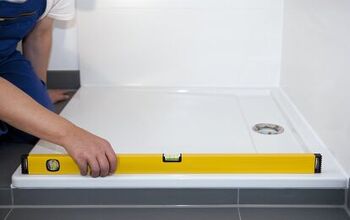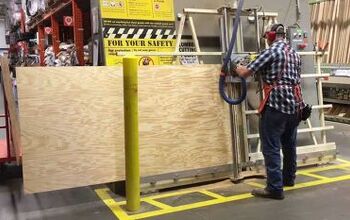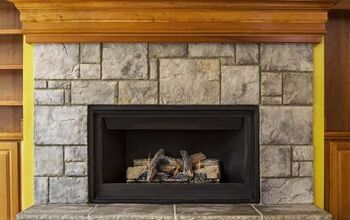What To Do During A Tornado If You Don’t Have A Basement

Many people who live in “tornado alley” take solace in knowing they have basements to retreat to. However, not everyone is so lucky, and they understandably feel vulnerable throughout the spring and summer. You’re not alone if you’ve ever wondered what to do during tornado season if you don’t have a basement.
If you don’t have a basement, you should at least shelter in a low-level, windowless room in your home. Pick a room that doesn’t sit beneath an upper-level room full of heavy furniture, like a dresser or bed. Ideally, you should hide in a room that doesn’t have an exterior wall to protect yourself from flying debris and strong winds.
Some people hide in closets, which is a viable option if you don’t have a basement or a windowless room. It’s worth investing in a tornado shelter if you live in tornado alley and can justify the cost. Follow along as we explore what to do during a tornado if you don’t have a basement.
Tornado Safety Tips If You Don’t Have A Basement
There’s no way to guarantee your safety during a tornado. However, you can at least reduce the risk of serious injury if you shelter in the safest available spot. You can try several alternatives if you don’t have a basement, such as:
1. Pick A Windowless Room
If you don’t have a basement, you should at least seek shelter in a windowless room in your house. Windows can easily shatter during a tornado, and that’s a major risk for many reasons. For example, a tornado can shatter your windows, and the glass may injure you or anyone close.
A shattered window can also leave you vulnerable to flying debris that can enter your home at high speeds. Tornadoes can launch debris at speeds of over 100 miles per hour, and that’s enough to severely injure or kill you in some cases. That’s why it’s worth sheltering in a windowless room, or a room with as little debris as possible.
2. Shelter In A Low-Level Room
You may not have a basement, but you at least have a lower level if you live in a house with several stories. In that case, you must hide in a room on the lowest level in your home to protect yourself as much as possible. Upper-level rooms are more vulnerable to the intense wind and power that come along with tornadoes.
Lower-level rooms have more structural integrity and are less likely to blow away or suffer severe damage. The wind speed is typically less severe at the lower levels of your house. Luckily, the ground floor is a great alternative to sheltering in the basement if you don’t have one.
3. Surround Yourself With Walls
Naturally, hiding in a room near exterior walls can leave you vulnerable to injuries during a tornado. This may be your only option, which doesn’t mean you're doomed, but you should find an alternative if possible. For example, you can shelter in a room that sits between several other rooms to surround yourself with barriers.
Sheltering in a room between 2 rooms on your left and 2 on your right is much safer than hiding in a room with an exterior wall. The added security of layers of thick walls can insulate you from flying debris. Granted, tornadoes are stronger than most walls, but this can still protect you in many ways.
4. Avoid Rooms Beneath Heavy Objects
As we’ve established, you should shelter on the lowest level possible during a tornado. However, you must carefully consider what sits above you as you shelter on the ground level. After all, the floor above you is naturally more vulnerable to wind damage than the floor you’re on.
A tornado can rip the roof off your home, send debris into your house, and damage the floor above you. Wind damage increases the higher the tornado goes, so the upper level is at a much higher risk of damage. Unfortunately, this means that the upper-level floors may collapse and fall to the lower level.
Heavy objects that sit on the upper level, such as a piano or bed, can fall onto the lower level. That’s why you should only shelter in a room if you know there are no heavy objects above you. Pick a room that doesn’t sit below an upper-level room full of heavy objects, or simply shelter in a part of the room where the floor above is relatively clear.
5. Hide Beneath Furniture
While you shouldn’t shelter in a room beneath a heavily furnished room, you can safely hide beneath furniture during a tornado. It may sound counterintuitive, but a heavy piece of furniture can help protect you from flying debris.
This shouldn’t necessarily be your first instinct upon hearing a tornado siren, but it’s a good option if you don’t have a basement. Heavy furniture is less likely to get tossed by the wind, and it can also shield you from debris, like glass. Hiding beneath furniture in a centralized room on the ground floor can help you avoid injury during a tornado.
6. Find A Closet
A closet may not be as safe as a basement, but it can at least protect you from debris during a tornado. Closets are small, cramped, and covered by doors that can easily keep flying debris away from you. Hiding in a closet during a tornado is a good idea if you don’t have any other viable options.
Keep in mind that a closet against an exterior wall may not protect you too well. It’s likely vulnerable to wind damage and flying debris, so pick another closet if possible. Otherwise, you can shelter in a closet during a tornado as a last resort.
What Building Material Is Safest From Tornadoes?
Steel and insulated concrete forms are the most durable building materials to withstand tornado damage. Metal roofs can also withstand tornado winds better than other options, like asphalt shingles. Aluminum and steel can not only withstand heavy winds, but also damage from flying debris.
Some homeowners in tornado alley reinforce their roofs to prevent damage from intense winds during tornado season. This entails fastening the roof with clips and straps to reinforce it, and it’s equally effective at protecting homes from hurricane winds. Reinforcing your roof with straps and clips can cost between $1,000 and $5,000, depending on material and labor costs.
How Much Does A Tornado Shelter Cost?
Tornado shelters typically cost between $2,800 and $15,000, but it varies. Factors such as materials, location, and labor can affect the cost of your tornado shelter. Naturally, basement shelters are the safest, but they also typically start at $6,000.
This is a big investment, but it’s the best option if you live in an area with frequent tornadoes during the spring and summer. You can also install a ground-floor safe room storm shelter for $3,000 to $10,000 or more. Kevlar, concrete, and steel are the best materials for tornado shelters as they can withstand extreme winds and debris.
Summing It Up
Shelter in a windowless room on the ground floor of your home during a tornado if you don’t have a basement. Ideally, you should pick a centralized room amidst several other rooms to put as much space between you and the tornado as possible. Don’t hide beneath rooms on an upper level during a tornado that has lots of heavy furniture, like beds and dressers.
Related Guides:

Nick Durante is a professional writer with a primary focus on home improvement. When he is not writing about home improvement or taking on projects around the house, he likes to read and create art. He is always looking towards the newest trends in home improvement.
More by Nick Durante



























